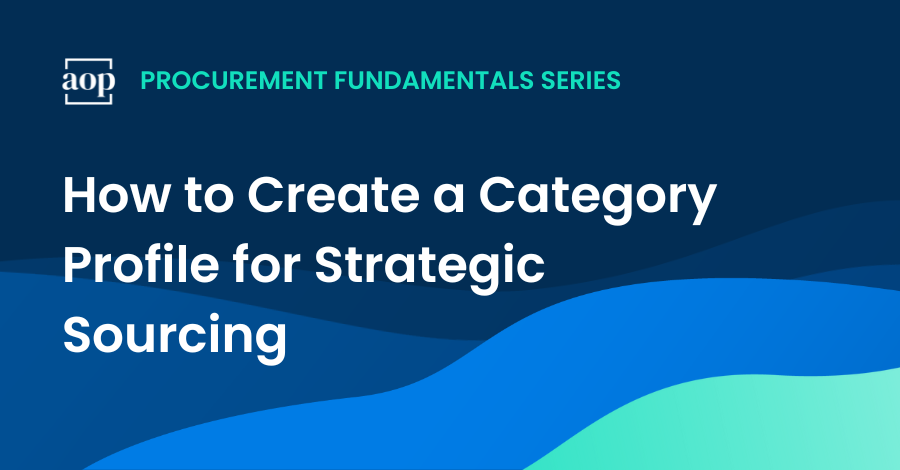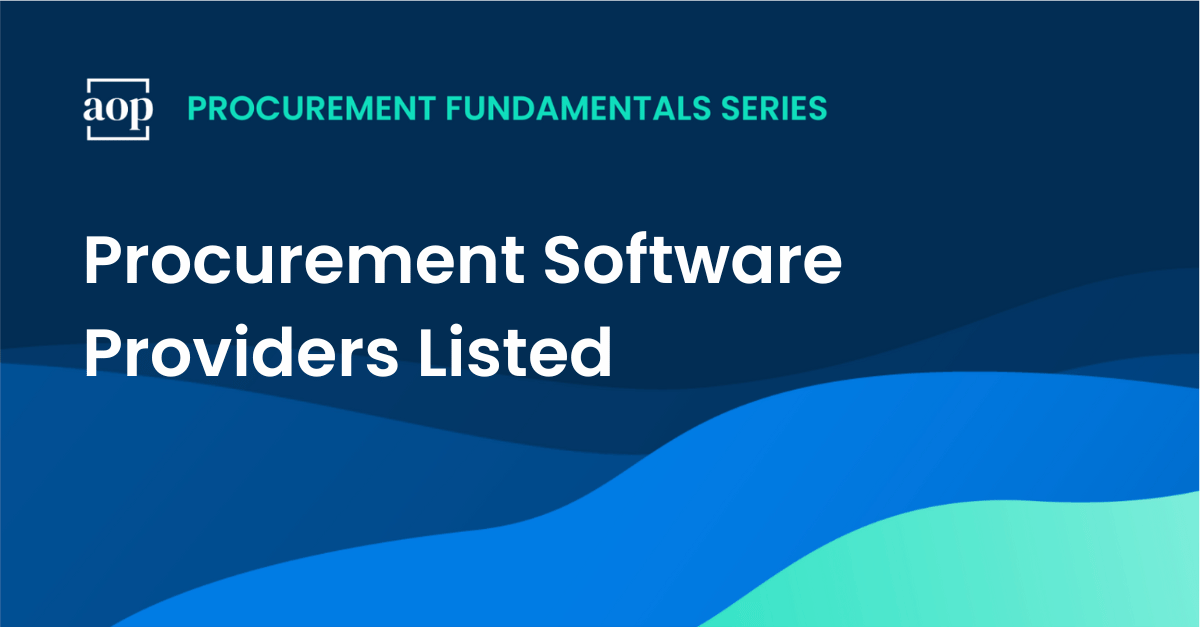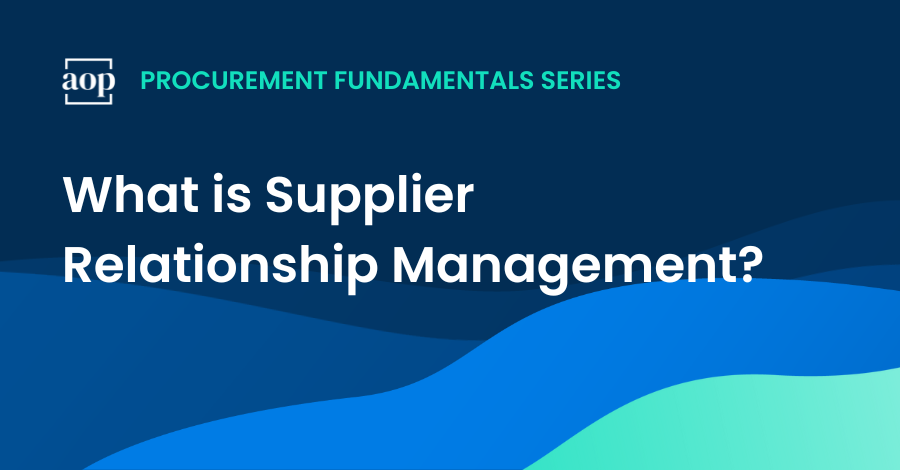
One of the first things you need to do in a new strategic sourcing project is to assess the internal and external aspects of key categories. This helps you quickly understand whether you’re in a buyer’s or seller’s market and gives you the data you need for informed decision making.
One tool you can leverage is a category profile. In this article I’ll go through in detail what this is and how you can use it as part of your broader strategic sourcing activities.
What is a category profile?
A category profile is a comprehensive analysis or documentation of a specific category of goods or services within your organization’s procurement portfolio. This profile can be an important step in a strategic sourcing process, providing detailed insights into both the internal and external aspects of a category.
An effective category profile includes information about current spending patterns, procurement processes, supplier landscape, market dynamics, and potential risks and opportunities. By developing a thorough category profile, you can expect to make better informed decisions, optimize sourcing strategies, and achieve better overall value from procurement initiatives.
How does a category profile relate to strategic sourcing?
A category profile can be used as a way to embed category management best practices into the start of a strategic sourcing project. You can think of it as “Category Management Lite,” where you quickly define and share a snapshot understanding of internal and external category dynamics to influence and support decisions made in your sourcing project.
Before founding Art of Procurement, I worked for over a decade as a procurement transformation leader for companies like the Ford Motor Company, Pfizer, and Chiquita Brands International. During this time, I utilized many different category management and sourcing processes. I have since developed my own 7-step strategic sourcing process that I use when helping clients implement formal programs. Developing a category profile is the second step of this broader program.

Here is how defining a category profile fits into the 7 step strategic sourcing process:
- Step 1 – Identify opportunities
- Step 2 – Develop category profile
- Step 3 – Develop strategy
- Step 4 – Identify selection factors
- Step 5 – Conduct RFx / auction
- Step 6 – Develop & negotiate agreements
- Step 7 – Implement agreements
How to develop a category profile
In the second step of my strategic sourcing process you develop a category profile, starting with an internal assessment and then looking at the market and supplier opportunity.
2.1 Develop internal (spend) profile
The first place to look when building your category profile is what and where you’re spending today. When you’re developing an internal profile, you’re essentially building a spend profile for different categories.
Define data collection approach
The first critical task is to define your data collection approach. Decide the types of information you will gather, such as contracts, spend data, and usage data.
Ideally, you should aim to collect spend data spanning approximately three years. This longer-term trend data will give you a clearer picture of how your organization has been consuming the product or service in question. By looking back over a longer period, you can identify patterns and anomalies that might not be apparent in shorter time frames.
Collect & assess spend data
Once you have defined what information to collect, the next step is to collect and assess spend data. If you have access to a spend analytics platform, this task becomes relatively straightforward. However, if you don’t have such a platform, you’ll need to get creative.
For an ad-hoc spend analysis you can collaborate with your finance and FP&A teams, or even accounts payable, to gather invoice-level data. This approach may involve pulling a significant number of invoices around specific suppliers. Don’t hesitate to ask your suppliers directly for historical invoice data; they can often provide six months to a year’s worth of invoices, which can be invaluable in building your spend profile.
Map as-is procurement flow
After gathering your spend data, you need to map the as-is procurement flow. The question you want to answer is how do you buy something today.
This means documenting the current process from the moment a business need is identified to the point where the product or service is received. This process will vary significantly based on what you are buying.
For direct materials, which are part of your cost of goods sold, the process might be highly automated, involving ERP systems and detailed forecasting. On the other hand, for services like consulting or contingent labor, the process might be less defined and more manual. By mapping out these processes, you can identify inefficiencies and areas for improvement.
Identify product/service specifications
Next, you will identify the requirements the business has in the form of product or service specifications. This involves capturing the detailed specifications of the products or services you are sourcing, including current and future business requirements.
Engage with your stakeholders to understand how their needs might evolve. It’s important to think not only about today’s requirements but also about potential future changes. For example, volumes might increase or decrease. You might be trialing something innovative that could see exponential growth, or you may find things that you’re not going to use again in a year’s time. Having conversations with key stakeholders early helps you anticipate changes and plan accordingly.
Identify initial supplier selection factors
Additionally, you need to review initial supplier selection factors. Consider the criteria you will use to evaluate potential suppliers. This can include risk tolerance, whether you prefer innovative or diverse suppliers, or if you aim to work with top market leaders. Another key factor to identify is key performance metrics or requirements suppliers will be expected to meet.
Understanding your risk tolerance is important. Are you willing to work with smaller, potentially riskier suppliers, or do you prefer the stability of established players? Do you have an understanding of the KPIs and SLAs needed to meet the requirements of business?
Develop total cost of ownership (TCO) model
Finally, to round up your internal spend profile you should aim to develop a Total Cost of Ownership (TCO) model. This model will help you assess the full cost of acquiring a product or service, beyond just the purchase price. It typically includes indirect costs such as transportation, logistics, and maintenance.
By considering the TCO, you can identify leverage points for cost efficiency. For instance, you might find that while you’re buying something at a lower piece price, you’re incurring higher overall costs due to additional factors like transportation.
Here are a few resources you can refer to in building your own cost model:
– Collaboration or Competition: Cost Transparency Settles the Debate with Rod Sherkin,
– Cost Optimization for World Class Manufacturing with Yushiro Kato,
– How to Understand Cost and Enable Fact-Based Supplier Relationships with Jimmy Anklesaria.
A cost model wraps up your understanding of your internal (spend) profile. This step ensures you have a detailed view of your current state, which is crucial for making informed, strategic decisions in the subsequent steps of the sourcing process.
2.2 Develop industry & supplier profile
After you have developed your internal profile, the next crucial step is to look at the external environment.
Assess industry profile
The first task involves analyzing the industry landscape, market dynamics, and supplier capabilities to identify opportunities and potential risks.
- Determine industry structure. Assess whether the industry is fragmented among many suppliers or concentrated with a few dominant players.
- Measure industry financials. Another key thing you can look at is the financial health and economic conditions within the industry. You can assess key financial metrics and trends to understand the economic stability, risk factors, and growth prospects of the industry.
- Identify industry trends/dynamics. Look for innovations and ways that new or growing businesses are doing things differently.
- Identify industry leading practices. Use tools like benchmarks and market intelligence to identify how the best performing companies are working today.
There are a number of tools you can use to analyze and diagnose market conditions, including SWOT analysis, PESTLE, and Porter’s 5-Forces.
Assess supplier capabilities
The second dimension to look into is key supplier profiles. This assessment involves understanding their strengths, weaknesses, and overall ability to meet your requirements.
- Identify supplier positioning. Try to understand how suppliers are positioned within the market. This includes analyzing their market share, reputation, and strategic positioning.
- Evaluate supplier financials. Assess the financial stability of key suppliers. This involves examining their financial health to ensure they can sustain long-term business relationships.
- Assess roadmap. Identifying suppliers who perhaps are not fit for your purpose today, but there’s a lot of potential for them to be in the future.
There are a couple of tools you can use to evaluate a portfolio of different suppliers:
- Supplier positioning matrix. You can use a framework like the Kraljic Matrix to map out your potential suppliers based on key factors like profit impact and potential supply risk.
- Supplier perception matrix (or supplier preferencing matrix). This takes the opposite view of the Kraljic matrix, looking at how your suppliers view you in terms of the value of the account and the perceived attractiveness of the account.
Engage suppliers with an RFI
One way to assess the supplier landscape is through a quick RFI, or request for information. By asking some qualifying questions of all suppliers early on you’ll get a good understanding of how they engage with you and which suppliers you want to include later in the process.
Don’t discount too many suppliers early on. A big part of category management is identifying suppliers who are perhaps not fit for your purpose today, but there may be potential for them in the future.
Bottom line on category profiling in strategic sourcing
A category profile can be a useful tool for procurement professionals, and represents an important step in the broader strategic sourcing process.
When you’re building up a profile, don’t just look at current spend, but also look to the future. Think about all the internal data, information, insights you can gather about the way that you buy today, who you buy from, what your expectations are of the supply base, and what is likely to be the capability of the market in the future.







